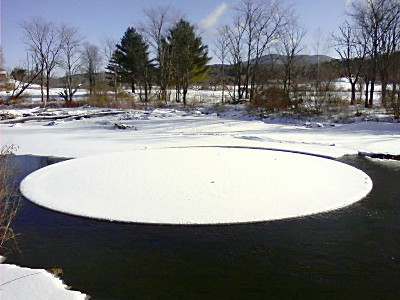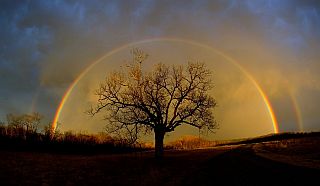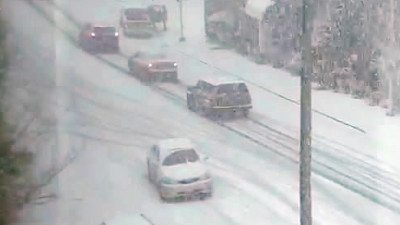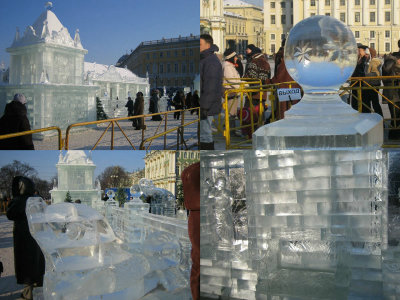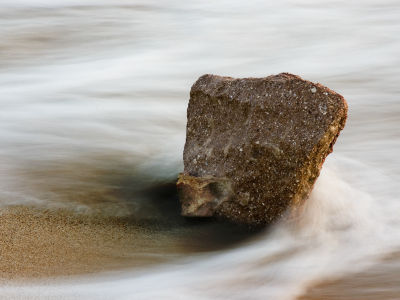'Snow Roller' is a mysterious natural phenomenon in which donut-shaped snow rolls like after a large number of children have played without anyone.
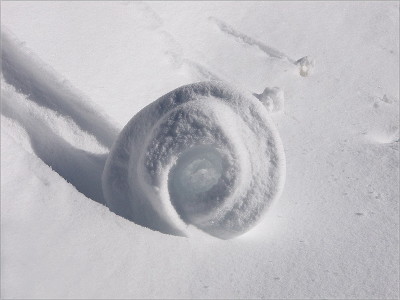
Photo by ilarib (ancora sotto effetto panettone!)
Rare self-rolling giant snow balls found in UK
https://www.telegraph.co.uk/news/weather/6950788/Snow-stories-rare-self-rolling-snow-balls-found-in-UK.html
Snow Roller observed in England after the first big cold wave in 30 years.
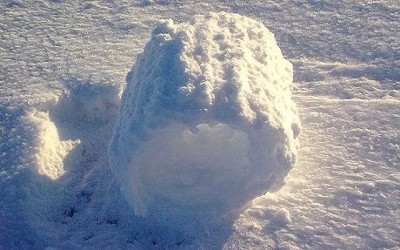
Photo: Ron Trevett
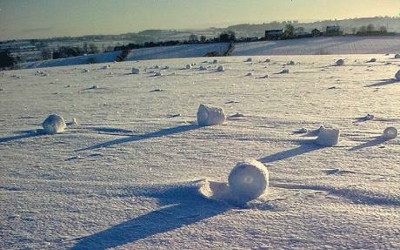
Photo: Ron Trevett
Observed from a car by Tim Tevebaugh on his way home from work near Craigmont , northern Idaho, on March 31, 2009. By the time he commute to work the next morning, he had already disappeared.
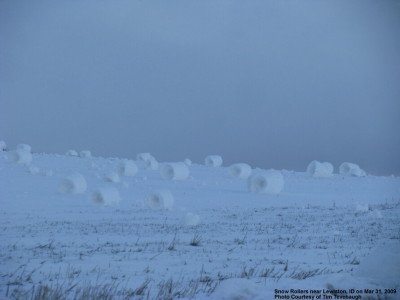
According to Tevebaugh's eye measurement and comparison with the height of the grass, most of the Snow Rolls shown here are about 18 inches (about 45 cm) in diameter, and the largest one is about 2 feet (about 60 cm).
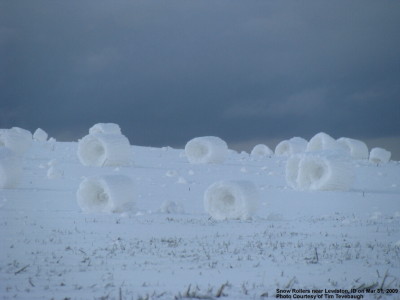
Snow Donuts --A Natural Weather Phenomena
This was observed in January 2008 in Ajax, Ontario. It looks like a trace of a large-scale snowball fight.

Ajax is near Toronto, and the water surface in the back is Lake Ontario.

The Snow Roller is almost cylindrical, and the small ones are fist-sized, and the large ones grow up to 70 cm in diameter and 1.2 m in length. A typical one is about 10 to 12 inches in diameter (about 25 to 30 cm).
Observed in February 2003 near Petersburg , Illinois, the Snow Roller is 11 inches in diameter.


It really looks like a child's play.

A snowball's chance rolls around
A Snow Roller about 25 cm in diameter observed in February 2003 in the Woodward High School playground in Bond Hill , Cincinnati, Ohio. The inner layer at the beginning of winding is thinner than the outer layer, and it is often blown away to form a cavity.

Photo by Glenn Hartong
According to Paul Pastelok, a meteorologist at Pennsylvania State University, strong winds of 60 km / h or more are required for snow to be rolled, but if the wind is too strong, it will be blown away. Also, especially at the beginning of rolling, it is easy to roll on a downhill, so it is often seen in mountainous areas.
This is not a strong wind, but something that seems to have been formed mainly by gravity. Washington State of North Cascades (to March 2003, the Cascade Mountains road through a portion of) Washington Pass was observed in. The larger one was about 24 inches (about 60 cm) in diameter, and it was said that a person's head could fit into the hole in the donut.

Photo by Mike Stanford
Snow Rollers as far as the eye can see in Utah.

Photo by Leigh Huggins
This was observed in Estonia in November 2008.

Photo: Olev Mihkelmaa
As mentioned above, Snow Rollers are mainly found in Canada from the northern part of the United States, but it seems that they are rarely observed in Japan such as Tohoku and Hokuriku. It seems that small snow rollers may occur on the slopes of the roof, so it may be a good idea to check the roof the next morning after snow and get in the habit of going out.
Related Posts:
in Science, Posted by darkhorse_log
